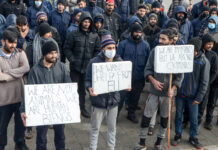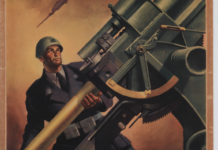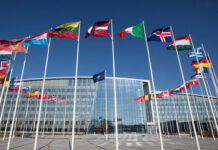Latest Developments
After the umpteenth risk of an escalation of the India-Pakistan armed conflict in early 2019, the two countries committed to a ceasefire along the Line of Control (LoC) in Kashmir in February 2021. Although the ceasefire had already been agreed in 2003, incidents have increased significantly since 2014. Over the course of 2020, Pakistan counted 114 Indian attacks resulting in 62 casualties. The frequent use of large-calibre artillery by both sides was also worrying.
The agreement on renewed compliance with the ceasefire is a significant step forward towards détente between the two countries. In fact, less than a month later, Pakistan’s Army Chief General Qamar Javed Bajwa outlined his vision for foreign and strategic policy aimed at prioritizing the country’s economy. Peace with India is a precondition for this new course. Pakistan National Security Advisor, Dr Moeed Yusuf, confirmed this vision in a meeting with his American counterpart in late May. The Pakistani plan seeks to advance a model of bilateral cooperation with the United States not based on security and defence but on economy, trade and business.
On the domestic front, the border areas where the Taliban rose as a movement are once again plunged into turmoil. The local Pashtuns participated in a public gathering called by the Pashtun Tahafuz Movement (PTM) to demand greater protection of human rights. The PTM has been critical of the government’s policies, and especially the army in Waziristan responsible for the high number of forced disappearances and human rights violations. The PTM leaders have come under fire for pursuing the release of individuals detained by the authorities without due process. The army has accused the PTM of leading an anti-national program and playing into the hands of enemies of the state.
A dangerous process leading to the reunification of different Taliban groups was reported during the summer 2020 in the tribal areas, under the banner of the Tehrik-e-Taliban Pakistan (TTP), the organisation from which they had split in 2014, under pressure from the Pakistani government’s major military operation in northern Waziristan. The TTP’s consolidation has led to a new and alarming spate of internal violence, following a steady fall in the number of attacks since 2009 (with the exception of 2013). In the first few months of 2021 there was a marked increase in the number of attacks by the TTP conducted almost exclusively in the province of Khyber Pakhtunkhwa.
Towards the end of 2021, however, the government and the TTP resumed their talks (they had already attempted an agreement in February 2014) thanks to the mediation of the Afghan Taliban. The ceasefire lasted one month (until 10 December 2022) but was not immediately renewed and a month later Islamabad confirmed that the talks were still suspended. Furthermore, on 10 January 2022, the local press reported that Khalid Balti, alias Muhammad Khorasani, former spokesman of the group, was killed by unknown persons in the Afghan province of Nangarhar.
What is being fought for
Pakistan is essentially at war on two fronts: an external front, consisting of the conflict against India not only for Kashmir, but also against a fear of impending annihilation; an internal front, where a diverse galaxy of armed actors such as the TTP are attempting to reorganise the country according to purely Islamic principles, as well as ethno-nationalist and separatist groups, mainly active in Balochistan and Sindh provinces.
Over the course of 2020, the TTP and other affiliated groups conducted 95 attacks in Pakistan, resulting in 140 casualties, 75 of which took place in the province of Khyber Pakhtunkhwa, where the seven Tribal Districts, formerly known as the Federally Administered Tribal Areas (FATA), were formally absorbed in 2018. The slow pace at which the FATA have carried out promised reforms and the instability that is bound to emerge in neighbouring Afghanistan are two factors in a likely intensification of the conflict with the TTP.
Balochistan, and to a lesser extent Sindh, have proclaimed themselves as provinces where ethno-nationalist tensions will likely increase. Balochistan has been for years under control of the military, and has been plagued by the scourge of forced disappearances, as denounced by the local population. The separatist groups operating there have adopted an increasingly bold strategy in the choice of objectives and in the way in which to conduct these attacks.
Country Overview
Born from the ashes of the Anglo-Indian Empire, the Islamic Republic of Pakistan is divided into four provinces, two autonomous territories and the territory of the capital, Islamabad. Its genesis was marked by deep trauma resulting from the Partition of colonial India in 1947, which caused the deaths of between 500,000 and two million victims and about 15 million displaced people. The religious party’s ambitions – the Muslim League – merged with British ambitions to weaken an increasingly pro-Soviet India. Two Pakistans were created during this process: one Western (present) and one Eastern (now Bangladesh) separated by about 1,600 km of Indian territory. In 1971, a short conflict between the two Pakistans led to the emergence of Bangladesh as an independent state. After the death of the Muslim League’s founder, Muhammad Ali Jinnah, in 1948, Pakistan experienced a democratic drift that for decades was characterized by a succession of military regimes and a process of religious radicalization. The darkest period was from 1978 to 1988, under the dictator Zia ul-Haq, who launched a campaign of Islamization in the country.
The historically tense relations with India and Afghanistan have played a central role in the evolution of the Pakistani State and have also contributed to the militarization of Pakistani politics. India has always been regarded as the main threat to the very existence of Pakistan. The dispute over Kashmir represents the point of convergence of these historical tensions.
There have been three wars fought for this region to date, most recently the Indo-Pakistani war of 1999. In addition to direct conflicts between these two countries equipped with arsenals of nuclear weapons and among the largest armies t in the world (India has 1.2 million troops, while Pakistan has about 600,000 troops), the struggle for Kashmir took place mainly as a low-intensity, asymmetrical conflict: on one side the Indian army, with its oppressive treatment of the local population, on the other side guerrilla groups, both internal and infiltrated by Pakistan.
Still, around Kashmir, tensions are related to mutual disagreements on the use of water. Severe water shortages in both countries, which are expected to worsen due to global warming, have been exacerbated by engineering projects such as dams and hydroelectric plants. Similar problems related to the management of common water resources also affect the difficult relations between Pakistan and Afghanistan.
Over the past three decades Pakistan has also sought to influence Afghanistan’s internal affairs, mainly through the targeted use of the Taliban, both Pakistani and Afghan, to counterbalance the threat posed by India. The main reason for this policy of interference, mainly supported by branches of the military, is related to the so-called doctrine of “strategic depth,” which sees Afghanistan as a territory where it is possible to retreat in the event of an Indian attack.
The support given to Afghan Mujahideen as well as the clandestine war in Kashmir have strengthened the power and autonomy of the armed forces (the military intelligence agency above all) and created a remarkable framework of armed and trained jihadists. Former cricket player Imran Khan’s current government came to power after the elections of July 2018. A conservative politician, he is said to have benefited from the support of the military apparatus, which was in open breach with the previous government of Nawaz Sharif.
The country’s economy is largely controlled by a few families and the military, while in rural areas there is still a strong presence of large landowners. These feudal elites represent a key factor in determining the nature of clientelist relations in national politics. The Pakistani economy is in a constant state of inadequate energy resources, both for household and industrial use. For some years now, Pakistani governments have been seeking investors and funding. The International Monetary Fund holds continuous negotiations with Pakistan, while friendly countries such as China, Saudi Arabia and the United Arab Emirates have promised loans and investments on preferential terms.
Key figure or organization: I.A. Rehman (India 1930 – Lahore 2021)
Co-founder in 1987, director and later secretary-general of the Human Rights Commission of Pakistan for many years, I.A. Rehman was seen as a persistent voice denouncing human rights violations in Pakistan. In particular, he championed the cause of ethno-religious minorities, such as the Hazara. He often reported defects in the legal system, including those linked to an extreme interpretation of the laws against blasphemy. Furthermore, he spoke out incessantly against the practice of forced disappearances, never formally recognized by the Pakistani State: this subtle method of repression of secessionist tendencies that has become even more acute, especially in Balochistan province. During the long years of his activism, Rehman contributed to preserving the idea of freedom while Pakistanis had to adapt to living under military regimes.
Focus 1: mysterious deaths
In the spring of 2020, the conflict in Balochistan reached a turning point, shaking the entire Baloch community in exile, especially those who chose to move to other countries for reasons of personal safety. That was the case with the exiled journalist Sajid Hussain who disappeared on 2 March in Sweden. Many suspected that his disappearance was not accidental but connected to his recent past as an activist student and journalist dealing with issues of human rights and cases of forced disappearances in Balochistan. His body was found on 23 April in the river that runs through Uppsala. The Swedish police dismissed Sajid Hussain’s death as a suicide. Eight months later, a similar incident occurred in Canada: Karima Baloch, the first woman to lead the same political student body of which Saijd had been a member, was found dead in Toronto. Again, the police stated that her death was a suspected suicide. The Baloch community thinks differently, and so do the major international human rights organisations. There are many clues that lead them to suspect the beginning of a campaign to eliminate political opponents and exiled activists.
Focus 2: the TLP
The Tehreek-e-Labbaik Pakistan, or TLP, is the latest ultra-conservative Islamist party to dominate Pakistan’s political scene. Formed in 2015, in the wake of other organisations using an extreme interpretation of religion to achieve their political purposes, the TLP began to put pressure on the Pakistani government in 2020 to sever all diplomatic relations with France. Street clashes broke out in cities across the country in April 2021. After nine days, and 36 casualties, the protests stopped. The Pakistani government bowed to the TLP’s demands, initiating a debate in Parliament on the possible expulsion of the French ambassador.


















